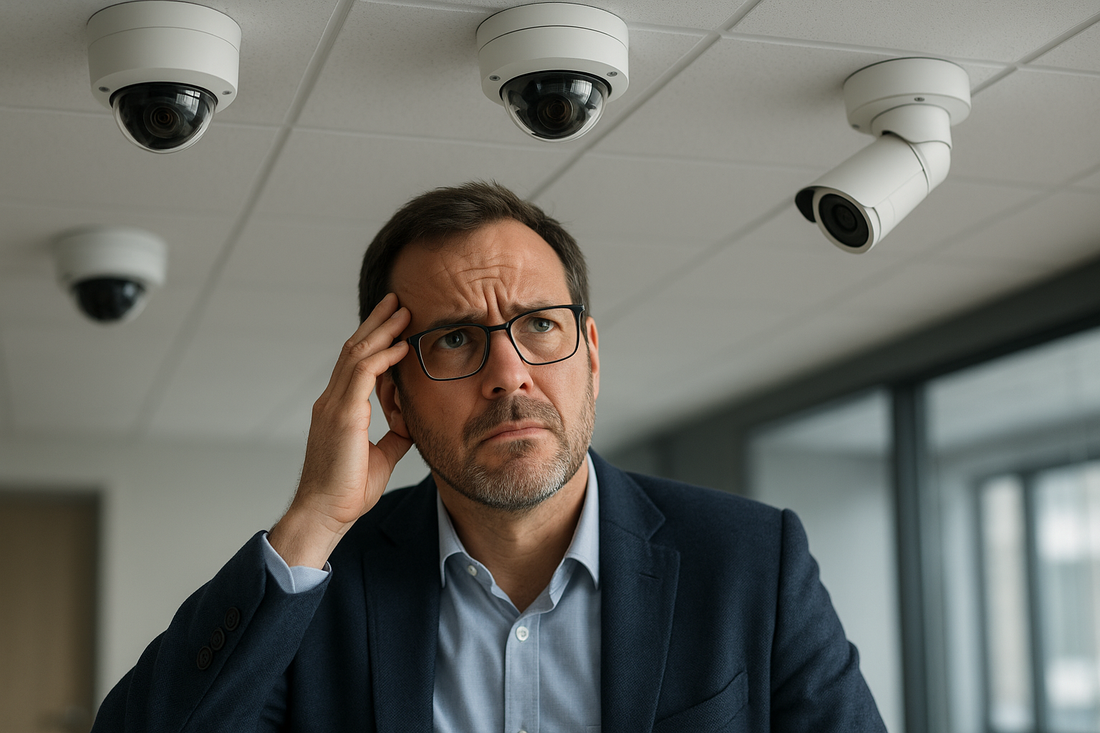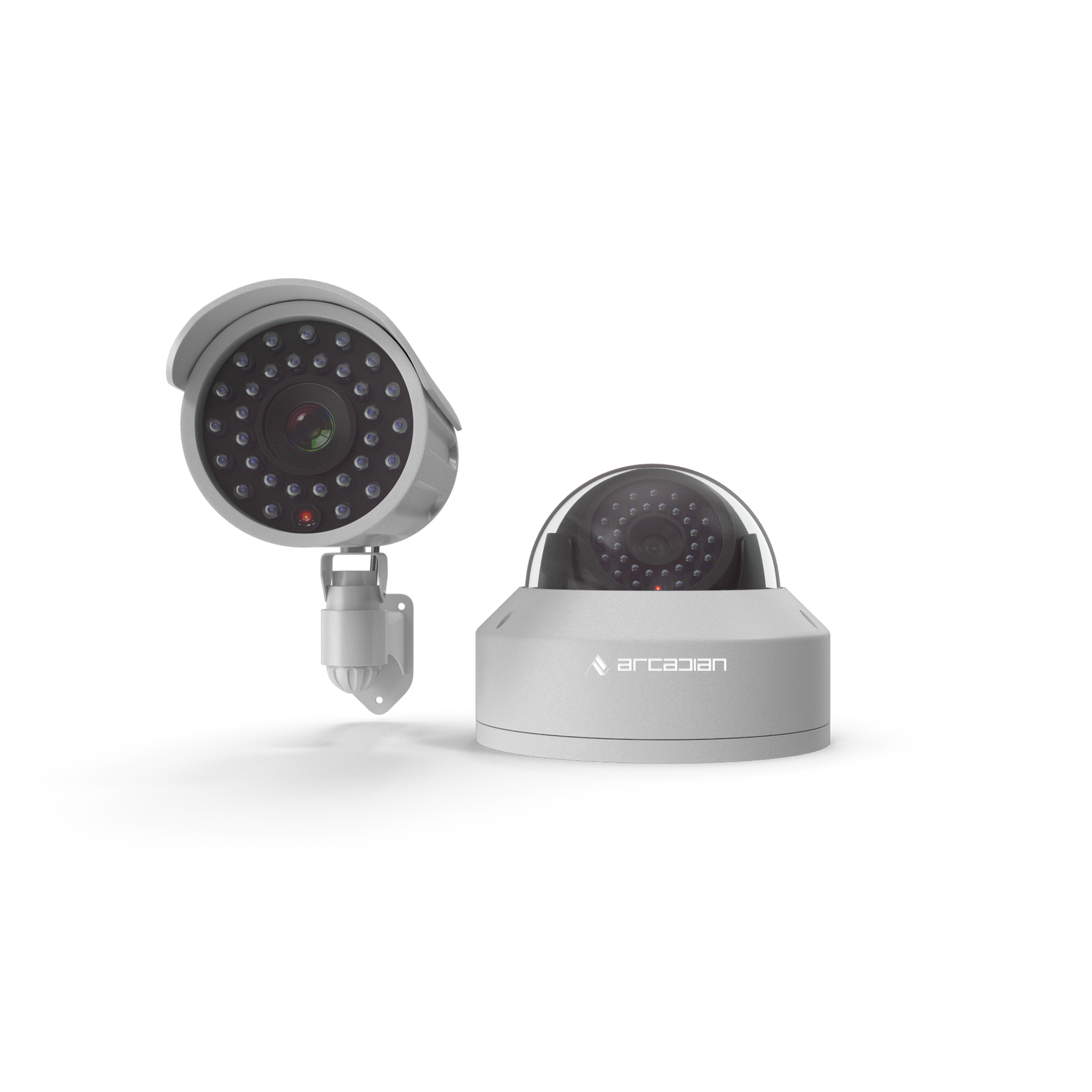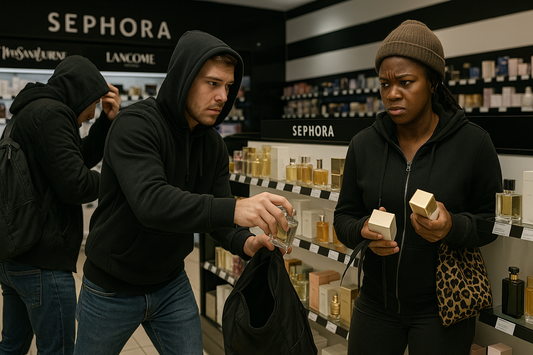The Hostage Model in CCTV: How Hardware + VMS + VSaaS Lock You In Forever
Verkada’s chairman once bragged customers “will never churn” because their cameras are bolted to ceilings. He wasn’t exaggerating — Meraki, Avigilon, Hanwha, and others are building business models around captivity, not choice.

Introduction
In 2019, at a founders’ event, Verkada’s chairman openly admitted what many in the video surveillance world already knew but never said out loud:
“You might have bought a one-year license, but you like literally bolted the hardware to your ceiling. So, like, you’re not taking it down. They’re never going to churn.”
That single quote captures the DNA of an entire industry. From Cisco Meraki to Motorola Avigilon, Hanwha, Axis, Genetec, Eagle Eye Networks, Milestone, Rhombus, and beyond — surveillance companies have built hostage-based business models where you can check in, but you can never check out.
ArcadianAI was founded to break that cycle. We believe AI-powered surveillance should be camera-agnostic, cloud-native, and flexible. Not a prison disguised as security.
This blog will expose the hostage model — with hard stats, brand callouts, and real-world examples — and explain how businesses can escape.
Quick Summary / Key Takeaways
-
CCTV companies bundle hardware + VMS + VSaaS to trap customers.
-
Verkada, Meraki, Avigilon, and Hanwha all use hostage economics.
-
Churn prevention = forced licensing, not customer love.
-
IPVM, Gartner, and NRF data show massive dissatisfaction.
-
ArcadianAI + Ranger = camera-agnostic, flexible, and future-proof.
Background & Relevance
The global video surveillance market surpassed $58 billion in 2024 and is projected to hit $95 billion by 2030 (Statista, 2024). Yet customer satisfaction hasn’t followed.
Why? Because vendors increasingly tie hardware (cameras, NVRs) to software (VMS, analytics, cloud storage) into all-or-nothing packages.
-
Cisco Meraki requires licenses for every camera, renewed annually.
-
Avigilon (Motorola Solutions) locks advanced AI features behind subscriptions.
-
Hanwha Vision is expanding into VSaaS with proprietary ties to its Wisenet hardware.
-
Verkada is the poster child for “hostage economics.”
This isn’t innovation — it’s captivity.
Core Topic Exploration
Why CCTV Vendors Love the Hostage Model
Cameras are bolted to ceilings, wired into infrastructure, and expensive to replace. Vendors exploit this by:
-
Bundling mandatory software licenses — stop paying, and your $10,000 camera system becomes a paperweight.
-
Making hardware proprietary — cameras only work with their cloud.
-
Artificial feature gating — AI analytics only unlocked with paid tiers.
-
“Free” hardware bait — but you’re stuck with endless recurring fees.
This isn’t just theory. It’s public strategy. Verkada’s quote proves it.
The Big Players & Their Lock-In Tactics
Verkada
-
Closed ecosystem: cameras only work with Verkada Command.
-
Subscription required for even basic features.
-
Pitch: “Simple, all-in-one.” Reality: zero flexibility.
-
IPVM reports repeated customer frustration with pricing and lock-in.
Cisco Meraki
-
Hardware + perpetual licensing model.
-
Lose the license? Cameras stop recording.
-
Built for IT departments, but punishes long-term cost of ownership.
Avigilon (Motorola Solutions)
-
Marketed as “AI-driven.”
-
Avigilon Control Center ties analytics to hardware + license tiers.
-
Integrations exist, but deep features only for Avigilon hardware.
Hanwha Vision
-
Once known for ONVIF-friendly Wisenet.
-
Now pushing VSaaS + proprietary tie-ins.
-
Risk: following Verkada’s path into tighter hardware/software binding.
Genetec & Milestone
-
Traditionally more open, but evolving toward “platform lock.”
-
As-a-service pricing introduces new choke points.
The Economics of Captivity
Let’s compare churn vs captivity in SaaS vs CCTV:
| Industry | Churn Prevention Method | Customer Impact | Vendor Benefit |
|---|---|---|---|
| SaaS (CRM, ERP) | Features + service value | Customers free to switch | Must earn loyalty |
| CCTV (Verkada, Meraki) | Hardware bolted down | Customers trapped | “Never churn” guaranteed |
The surveillance industry has inverted loyalty. It doesn’t have to earn customers. It just has to trap them.
Real-World Consequences
-
Retailers: NRF reports $112B shrink in 2022, yet billions wasted on locked-down systems that don’t prevent theft.
-
Schools: Districts locked into Verkada despite budget cuts.
-
Cities: Municipalities stuck with legacy Avigilon deployments, facing massive upgrade costs.
-
Healthcare: Hospitals forced to pay renewal fees or lose camera visibility.
Security isn’t just about catching criminals — it’s about not being robbed by your vendor.
Comparisons & Use Cases
Why ArcadianAI is Different
| Feature | Legacy Vendors (Verkada, Meraki, Avigilon, Hanwha) | ArcadianAI + Ranger |
|---|---|---|
| Camera Support | Proprietary, closed | Camera-agnostic (Axis, Hanwha, Hikvision, etc.) |
| Licensing | Forced renewals | Flexible, ROI-based pricing |
| Analytics | Locked behind tiers | Included AI, adaptive |
| Cloud vs Edge | Vendor-controlled only | Hybrid: cloud-native + edge-friendly |
| Customer Choice | Captive | Free to expand or switch anytime |
ArcadianAI isn’t here to bolt you down. We’re here to unlock your surveillance.
Common Questions (FAQ)
Q1: Why do companies like Verkada and Meraki tie cameras to licenses?
To guarantee recurring revenue. It’s less about customer value, more about churn prevention.
Q2: Can I migrate existing hardware to ArcadianAI?
Yes. Ranger is camera-agnostic, supporting ONVIF, RTSP, and major manufacturers.
Q3: Isn’t closed hardware more “secure”?
Not necessarily. Many closed systems (Verkada, Hikvision) have suffered breaches. Security comes from updates and resilience, not lock-in.
Q4: Why do CFOs hate proprietary CCTV?
Because ROI evaporates when cameras become useless without licenses.
Q5: What’s the future of surveillance platforms?
Camera-agnostic, AI-driven, cloud-native solutions like ArcadianAI.
Conclusion & CTA
For too long, CCTV vendors have built their business models around captivity. They brag about customers “never churning” because cameras are bolted to ceilings. They trap schools, retailers, hospitals, and cities in hostage economics.
It’s time to break free.
ArcadianAI + Ranger deliver true freedom: camera-agnostic, AI-powered, and future-proof. Your cameras should serve you — not your vendor’s lock-in strategy.
Security Glossary (2025 Edition)
-
AI Analytics — Machine learning algorithms that detect security events in video feeds.
-
Avigilon — Motorola Solutions-owned video surveillance vendor with hardware + VMS bundles.
-
Camera-Agnostic — Ability to support any IP camera, regardless of brand.
-
CCTV (Closed-Circuit Television) — Video surveillance system with cameras connected to monitors/recorders.
-
Churn — The rate at which customers stop using a service; in CCTV, prevented by lock-in.
-
Genetec — Canadian VMS vendor known for Security Center.
-
Hanwha Vision — South Korean camera manufacturer expanding into VSaaS.
-
Hostage Model — Business strategy where customers are trapped by hardware + software bundling.
-
Meraki (Cisco) — Cloud-managed networking and camera vendor using strict licensing.
-
Milestone Systems — Danish VMS provider, increasingly pushing platform lock.
-
NVR (Network Video Recorder) — On-premise device for storing and managing CCTV video.
-
ONVIF — Industry standard for camera interoperability.
-
Ranger — ArcadianAI’s AI assistant for real-time surveillance.
-
SaaS vs VSaaS — SaaS: software delivered via cloud; VSaaS: cloud video surveillance management.
-
Shrink — Retail term for inventory loss from theft, fraud, or error.
-
Verkada — US-based cloud surveillance vendor infamous for lock-in practices.
-
VSaaS (Video Surveillance as a Service) — Cloud-based camera storage and management subscription model.
-
VMS (Video Management System) — Software for controlling CCTV cameras, feeds, and storage.

Security is like insurance—until you need it, you don’t think about it.
But when something goes wrong? Break-ins, theft, liability claims—suddenly, it’s all you think about.
ArcadianAI upgrades your security to the AI era—no new hardware, no sky-high costs, just smart protection that works.
→ Stop security incidents before they happen
→ Cut security costs without cutting corners
→ Run your business without the worry
Because the best security isn’t reactive—it’s proactive.







